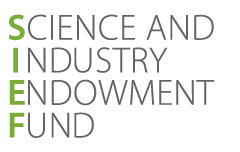Supply Chain Integrity Digital Mission
Supply chains encompass the movement of goods and materials through production, distribution and sales until the finished product is delivered to the end user. The digital transformation of supply chains brings the promise of significant benefit for Australia, while failing to do so would see Australia falling behind the rest of the world and losing market trust and share. The benefits include proven provenance to minimise fraud, real-time traceability (for example enabling rapid recall in response to food safety issues), increased efficiency, decreased regulatory burden, and real-time analytics on supply chain data for decision support. The Supply Chain Integrity Mission brought together complementary data science capabilities to strengthen supply chain integrity systems in four key areas:
• Provenance: By matching physical and digital world connections we can establish trust in the origin of Australian goods. For example, we may want to prove that Australian cherries sold in Asia really are from Australia. Our research shows that isotope and chemical signatures (which are unique to a geographic region) can determine the origin of cherries down to the specific cherry growing region in NSW, Victoria or Tasmania. In the seafood market where fraud is common, we want to verify fish is caught sustainably and species are correctly labelled. We have developed video analytics that can recognise fish species as they are caught from the boat, allowing fisheries management authorities to verify compliance without physically being there. And to have confidence in a claim that the lithium in a battery is really recycled, we can use blockchain to ensure integrity of the data across the entire supply chain. We have developed prototype software that makes it easier for small businesses to record business activities using a web browser.
• Traceability: Allows us to trace goods through the supply chain in real-time. This work enables the rapid identification of the source and removal of any contaminated food products from the supply chain. In order to trace a product across multiple organisations without manual intervention at each point, it is important to have standards that facilitate interoperability. Our research has developed code supporting the existing industry GS1 standards, which will allow participants to connect existing systems and describe the path a product takes across the entire supply chain.
• Security: Digital supply chains must be secure for users to trust them. We have developed an online risk map that can be used by organisations to better prepare for online risk resilience. Trust in traceability data requires trust in who signed the data, and we have developed a framework for distributed key management that allows trust to be established between actors along the supply chain.
• Analytics: Using real-time data to enable new insights and increase efficiency, unlocking value for producers. Sharing data between primary producers can improve farm productivity, but privacy concerns between competitors prevents this from occurring. We have developed a software demonstrator that undertakes analytics, without revealing private data to competitors. Real-time data also enables automated checking of compliance to assess whether food safety and quality standards are being met. We have built a demonstrator tracking the export of fresh produce from Tasmania to Hong Kong to verify compliance with cold chain requirements ensuring the produce stays fresh and of high quality on arrival. However, data collected in real-time can be unreliable, incomplete or inconsistent making it difficult to know where any product is at any point in time. Using deer as a use case, we have developed software that can handle missing data and speculate on the whereabouts of the deer at any point in time, from its origins in New Zealand to its delivery to a supermarket in Germany.
This research has matured multiple data science capabilities for use in digital supply chains, demonstrating the potential of these capabilities. Given the research focus of this Digital Mission, for most of the work packages there remains considerable work to further mature the research and develop platforms with industry for widespread uptake, however the research in video analytics for sustainable fishing has advanced to commercial discussion, and two teams have been accepted into the upcoming ON Prime program.
